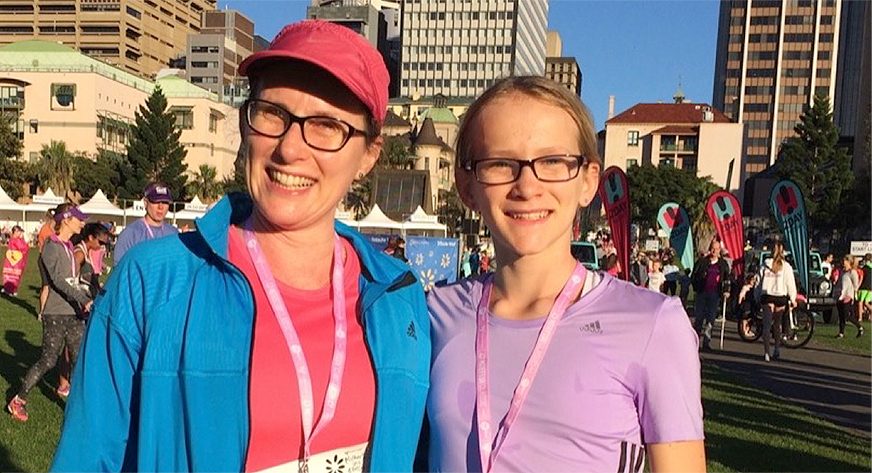
The George Institute's link to the Rio 2016 Paralympics
One of the major research focuses of The George Institute’s Professor Cathie Sherrington is how to encourage and motivate people with disabilities to take part in sport. Participation in sport can enhance health and wellbeing, as well as maximising physical capacity for people with disabilities.
Prof Sherrington also has a personal reason for this work. Her daughter Tamsin Colley (pictured above with Prof Sherrington) is competing in this year’s Rio Paralympics as Australia’s youngest 2016 Paralympian.
Tamsin will be running in the open-age T36 200m sprint on 12 September, just two days after her 14th birthday. This classification is for people with movement problems in both arms and legs. Tamsin had surgery to remove a brain tumour as a toddler, took her first unassisted steps at three and a half, and used a wheelchair until she was five years old.
Tamsin has participated in dance classes since the age of four, started Little Athletics at seven and now trains regularly with a para-athlete squad.
“I’m incredibly proud of how hard she has worked to become a high achiever on the track,” said Prof Sherrington. “Tamsin has always enjoyed being active. We never imagined that would result in her being selected to compete for her country at such a young age.”
“I love running because it’s fast, and it’s fun,” said Tamsin. “I’m excited about meeting all the people at the Paralympics, and representing Australia. It’s what I’ve dreamt of for a long time ... to make everyone proud.”
Prof Sherrington has undertaken trials and reviews of the benefits of physical activity and physiotherapist-prescribed exercise programs for older people and those with disabilities. After seeing the benefits of sport participation for her daughter and many others, she has turned her attention to strategies to enhance sport participation and has formed a partnership with Disability Sports Australia. So far this has resulted in a workshop for physiotherapists working with children with disabilities, an audit of sporting opportunities surrounding major rehabilitation hospitals, and a systematic review of the benefits of sports for people with disability.
Prof Sherrington said: “I hope that Tamsin’s selection for the Paralympics helps to motivate physiotherapists, parents and children with disabilities themselves to make the effort to identify and trial a range of physical activity opportunities.”

